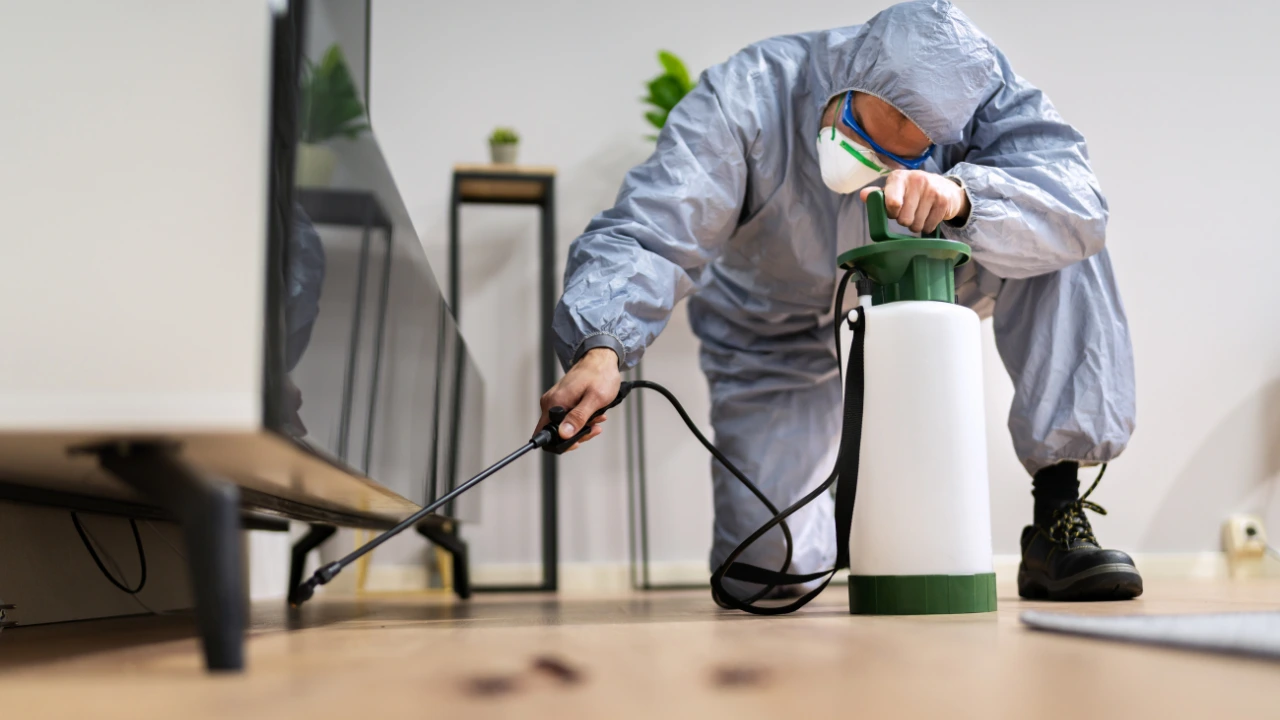Thorough Termite and Bug Solutions with Pest Control Lockhart
Thorough Termite and Bug Solutions with Pest Control Lockhart
Blog Article
Exploring Invasion and Therapy Techniques in the Globe of Parasite Control
The landscape of insect control encompasses a myriad of difficulties, especially as infestations of common home pests proceed to advance. By integrating precautionary procedures with advanced management techniques, such as Integrated Parasite Monitoring (IPM), home owners can better protect their environments.

Common Home Vermin
When it involves managing our home, recognizing typical household bugs is crucial. These insects not just interrupt our comfort yet can likewise pose health risks and damage building. One of the most widespread family parasites include ants, roaches, rats, termites, and bed bugs.
Ants, frequently seen foraging in kitchen areas, can pollute food and establish big swarms. Roaches, known for their strength, can set off allergies and spread pathogens. Rodents, including computer mice and rats, can create structural damage and lug illness like hantavirus and salmonella. Termites, commonly described as "quiet destroyers," can compromise the stability of wooden structures, leading to costly repair services. Bed bugs, although not disease providers, can cause considerable pain through their attacks and bring about emotional distress.
Acknowledging the indications of these bugs, such as droppings, nests, or bite marks, is important for early treatment (Pest Control Lockhart). Appropriate sanitation methods, sealing entry factors, and maintaining a clutter-free atmosphere work preventative procedures. By identifying these usual house bugs and recognizing their actions, house owners can take aggressive actions to mitigate problems, ensuring a much healthier living atmosphere
Recognizing Bug Infestations
Insect infestations can rise rapidly, turning a minor inconvenience right into a considerable problem if not addressed promptly. Common aspects contributing to infestations consist of bad cleanliness, structural susceptabilities, and seasonal adjustments that drive pests indoors.
Recognizing the kind of pest is important, as different types exhibit diverse behaviors and reproductive rates. For example, rodents might develop nests in surprise areas while bugs like cockroaches flourish in moist environments. Early detection usually depends upon identifying indicators such as droppings, munch marks, or uncommon noises, which can show an issue prior to it becomes serious.
Cozy, damp environments can help with the quick growth of parasite populaces, while modifications in landscaping or building can accidentally develop conducive settings. An enlightened approach to recognizing these characteristics lays the groundwork for effective pest administration approaches in the future.
Therapy Methods and Strategies
Effective treatment techniques and techniques are essential for mitigating parasite problems and restoring a safe setting. A complex method is usually best, incorporating chemical, organic, and mechanical strategies tailored to the particular bug and the intensity of the infestation.
Chemical treatments include the use of pesticides and herbicides, which can effectively remove insects. Nonetheless, correct application and adherence to safety standards are important to decrease threats to human beings and non-target organisms. Integrated Pest Administration (IPM) urges the judicious use chemicals as a last option, counting rather on tracking and limit degrees to figure out intervention requirements.
Organic control methods entail presenting all-natural killers or parasites to lower bug populaces. This strategy is progressively preferred, especially in farming setups, as it promotes ecological sustainability.
Mechanical approaches, such as traps and get more obstacles, offer instant remedy for here are the findings parasites without presenting chemicals. Choices consist of sticky traps for insects or physical obstacles for rodents.
Eventually, the choice of treatment method need to take into consideration the details bug, the atmosphere, and potential effect on human health and communities. A well balanced combination of these strategies can properly take care of problems while promoting long-term insect control solutions.
Safety Nets for Residence
Proactively resolving pest problems before they escalate is important for keeping a healthy home setting (Pest Control Lockhart). Applying efficient safety nets can considerably lower the probability of infestations, eventually protecting both your home and health

Correct landscape design additionally plays a critical role in avoidance. Maintaining shrubs and More about the author trees trimmed away from your house reduces the possibilities of parasites finding their way indoors. Guarantee that water drainage systems are working effectively to avoid standing water, which can attract in insects and other pests.
Finally, regular inspections are recommended. Frequently looking for indications of insect task enables for very early treatment. By embracing these preventive steps, homeowners can produce a setting that is much less congenial to bugs, thereby improving their overall high quality of life and reducing the demand for extensive parasite control interventions.
Business Bug Control Techniques
A thorough strategy to business insect control is crucial for businesses intending to maintain a secure and hygienic setting. Reliable methods include a mix of regular evaluations, employee training, and the application of Integrated Parasite Monitoring (IPM) methods.
Routine assessments enable early detection of pest task, enabling timely treatment. Organizations must create a regular schedule for these assessments, focusing on high-risk areas such as kitchens, storage areas, and garbage disposal sites. Worker training is just as crucial; team must be enlightened on the indicators of pest invasions and the value of reporting them instantly.
Carrying out IPM methods helps reduce parasite issues sustainably. This includes environment alteration, such as sealing access factors and minimizing clutter, along with utilizing natural deterrents before considering chemical treatments.

Moreover, collaborating with a licensed insect control supplier makes sure accessibility to expert understanding and sophisticated therapy choices. This partnership can result in customized bug control prepares customized to the particular demands of the business, decreasing risks and improving general effectiveness. Eventually, a positive and enlightened approach fosters a pest-free environment, guarding both public wellness and business track record.
Conclusion
In final thought, efficient pest control requires an extensive understanding of usual house insects and their behaviors, combined with targeted therapy methods. Applying preventive actions together with treatment approaches such as Integrated Insect Monitoring and biological control improves the ability to mitigate problems.
Report this page